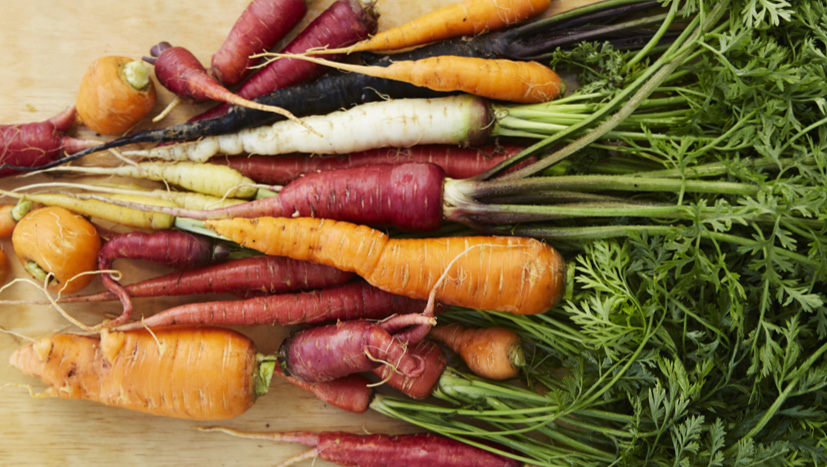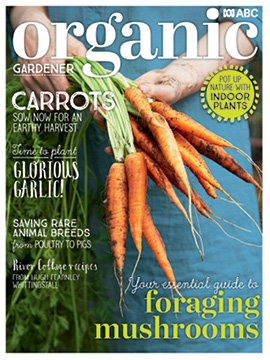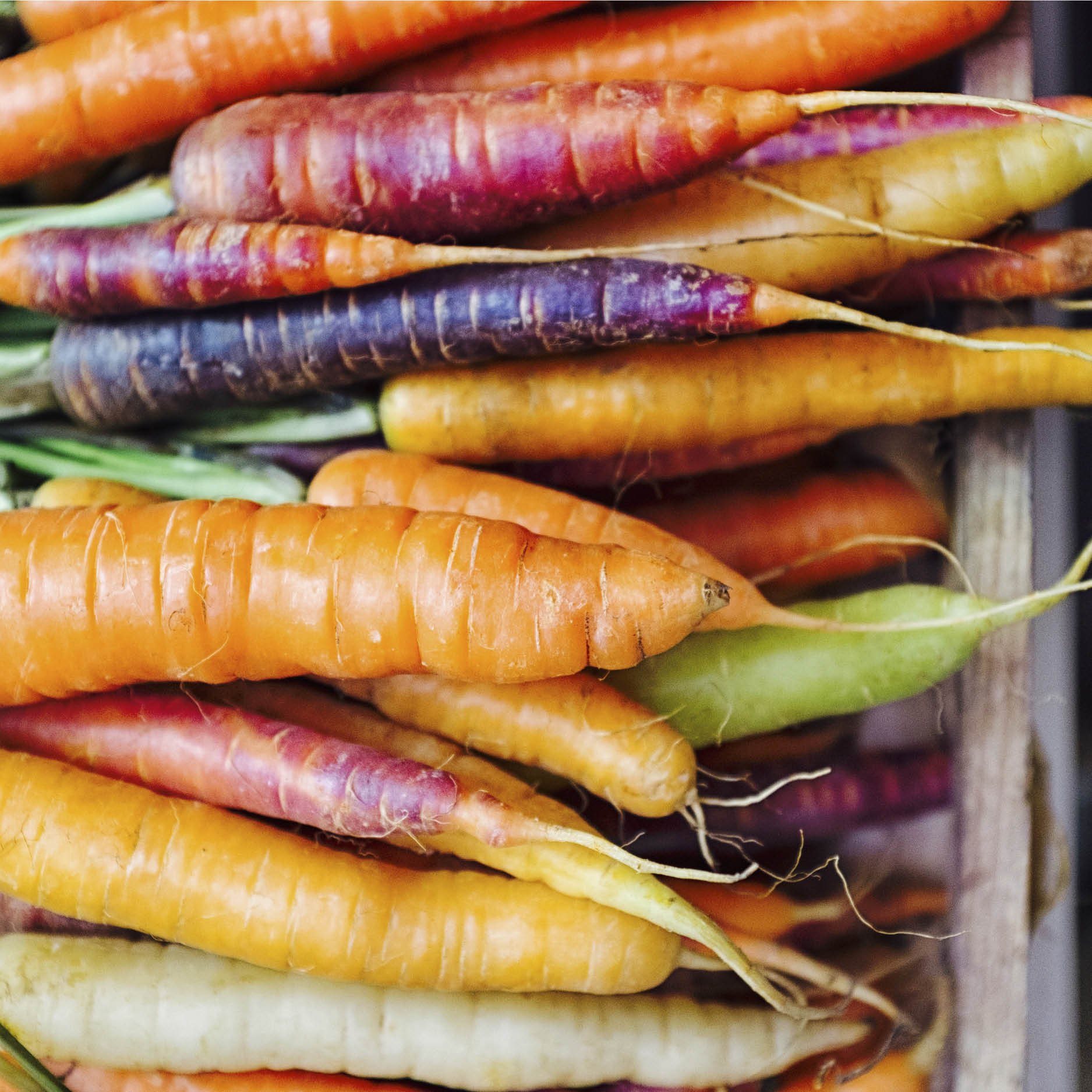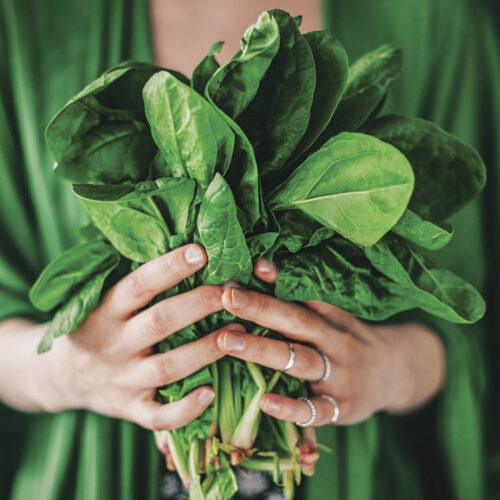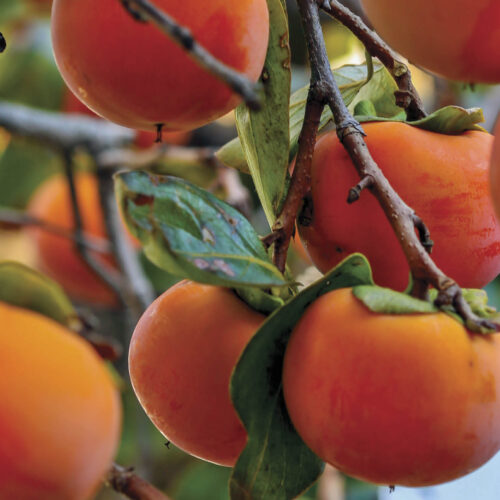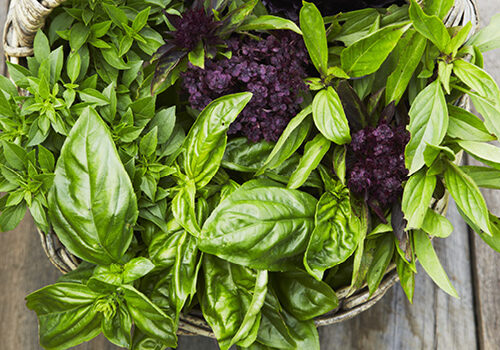Colourful carrots
2021-03-24T03:06:36+11:00
There are so many different types of carrot to grow, many of them vibrantly coloured heirloom varieties.
Carrots come in all kinds of different shapes and sizes as well as an array of colours, such as purple, black, white, yellow and red, as well trusty ol’ orange. The rainbow of variety alone is a good reason to have a crack at growing your own carrots, but the main reason why Paul West likes to grow his own carrots is the flavour. He’s written a detailed feature to guide you in your growing efforts (it appears in OG Issue 124) but here’s a few ideas to get you started.
Prepare your beds
To grow those long straight taproots that we know and love, give your beds a nice deep forking, breaking up any clods and removing any stones or debris as you go; the longer the variety of carrot you’ve chosen, the deeper you’ll have to prepare your beds. If you have heavy, clay soil, opt for cultivars that grow into a shorter ball shape (such as ‘Paris Market’) for best results.
Once the soil has been forked, give the surface a good raking to create a nice, fine tilth for planting into. Carrots are light feeders, so there is no need to add compost or manure when preparing the beds. In fact, they make the perfect plant to put in the garden after more nutrient hungry alliums in summer, or if planting in autumn, heavy feeding summer crops, such as corn and tomatoes.
Sowing seed
When you’re ready to plant, give the bed a good soaking so that your seeds go into moist soil. Then, gently press a length of dowel or garden stake horizontally into the soil to create a row that’s about 1cm deep to plant into. If you’re growing more than one row, space them around 30cm apart to give them plenty of space to grow.
Carrots hate being transplanted, so give punnets of carrot seedlings a miss and sow your seeds directly. Carrot seeds are tiny and can be a little fiddly to evenly sow, so sprinkle them sparingly along the rows or, mix a packet of seeds with 1–2 cups of clean river sand, making sure the seed is evenly dispersed and sprinkle the sand/seed mix thickly along your rows.
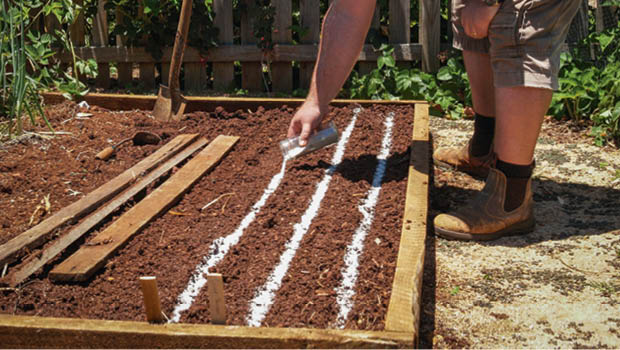
Once the seeds are in the ground, it’s critical to keep the soil moist until the seeds germinate, you can even leave an old plank of wood, a bit of hessian or an old cotton sheet over the rows to prevent them drying out during germination. But make sure you remove the covers as soon as the seed has sprouted.
Watering and feeding
Once the carrot seedlings have emerged, let them grow to around 5cm and then thin them so there is a nice strong seedling every 2–4cm. Don’t throw those thinnings away either! If you have a lot of them, you can collect them in a bowl, give them a good wash in a colander and fry them up with a bit of butter, salt and a splash of white wine vinegar!
To grow into long, sweet, juicy cylinders, carrots need regular watering. Increase the amount of water as the carrots grow to ensure moisture is penetrating the soil to the depth the carrots are growing. While they are light feeders, carrots benefit from a weekly feeding with a weak solution of liquid seaweed.
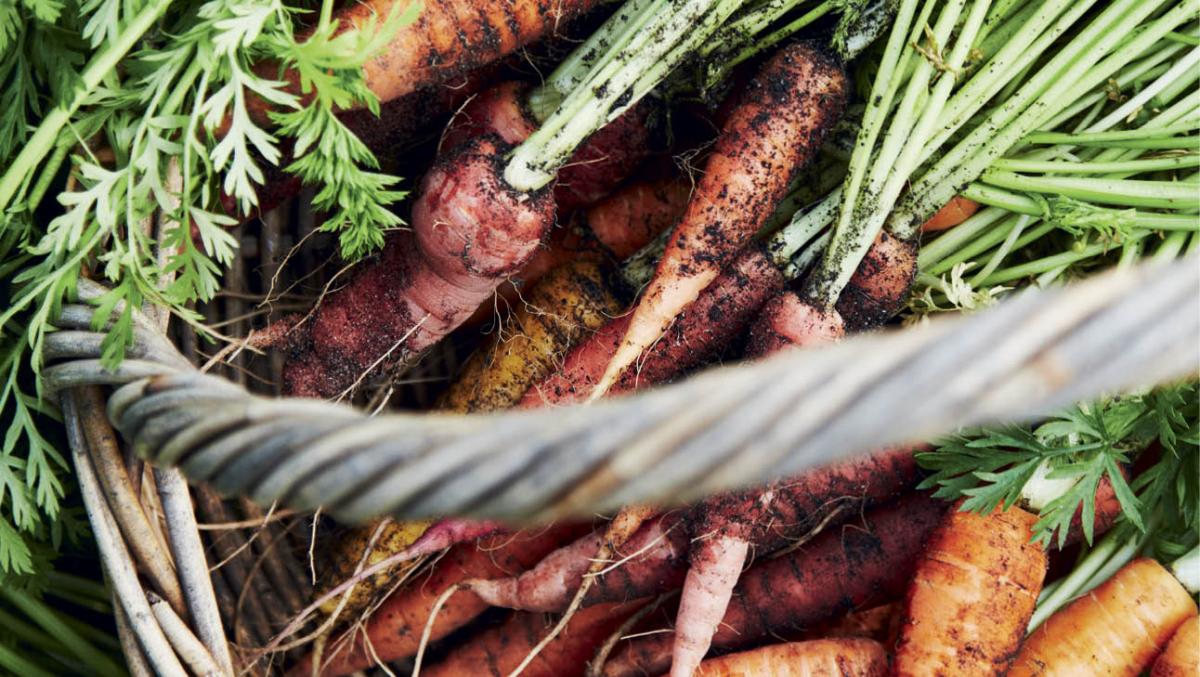
Pests and diseases
Carrots are relatively pest and disease free, though their greatest nemesis would be the carrot fly. The fly lays eggs in the soil and when larvae hatch, they make their way to the carrot root and feast. The best way to combat this is to make sure plants don’t get stressed: water regularly (though not too much, of course) and feed weekly with weak liquid seaweed. Regular crop rotation or a bit of clever companion planting will also help – try growing a row or two of spring onions close to your carrots to help deter the pests.
Growing it straight
The key to straight carrots is deep, friable soil, which means nice and loose with no stones, pebbles or compaction that will interrupt the steady downward growth of the taproot. These sorts of obstacles can lead to forking and other deformities. Good drainage is also a must. And remember, while we aim for perfectly shaped carrots, those that are bent, twisted and split are still great for eating.
Paul West is one of our regular contributors and he’s written about a number of different topics over the years. Here’s a couple of his articles:
How to get the native bee buzz — just add bees!
Paul West’s full article appeared in our Autumn 2021 issue (OG 124). For more naturally great organic ideas you can subscribe to the magazine here!

